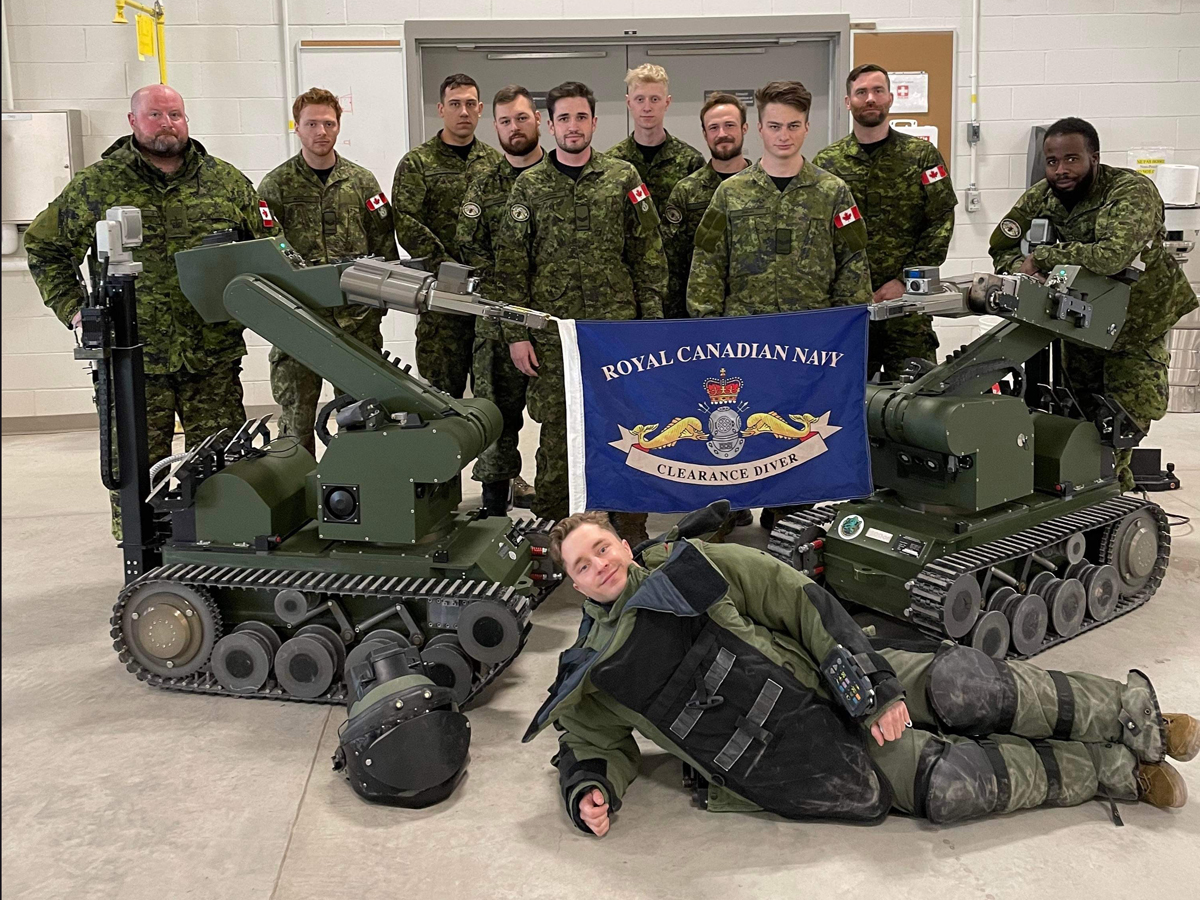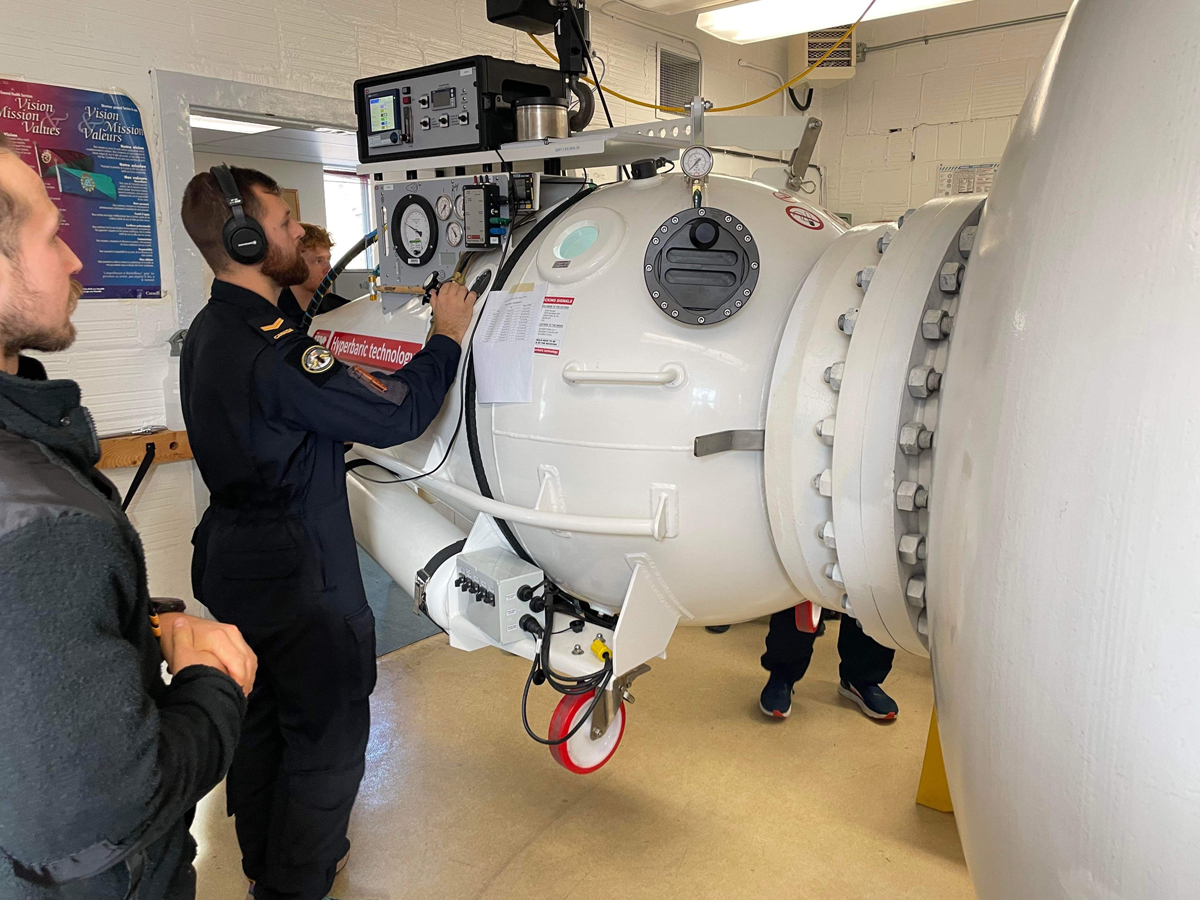Up and coming Clearance Divers graduation
By Lookout Production on Aug 19, 2022 with Comments 0

Course students posing on IEDD Improvised Explosive Device Disposal (IEDD) Assist with tEODor, the remote-controlled telerob Explosive Ordinance Disposal and observation robot.
Lt(N) Alexander Castagna,
Fleet Diving Unit (Pacific)
—
Ten candidates are set to graduate from the Clearance Diver Course at Fleet Dive Unit Pacific (FDU[P]) on Sept. 9, following a year of intensive training, diving, and camaraderie.
The candidates, consisting of nine non-commissioned members (NCMs) and one Clearance Diving Officer (CLDO), began their training at FDU(P) in Colwood last October, led by highly-trained diving and explosive ordinance disposal specialists.
“One year ago, I barely knew my nine course mates,” said Sailor Second Class (S2) Sam Phillips. “Now, one year later, what we have gone through together has given us a bond that will last a lifetime. This course and this trade have given me a second family and I am proud to be part of something so great.”
The course consisted of five phases.
Throughout the first training phase, candidates learned how to operate the Recompression Chamber (RCC), a hyperbaric or decompression chamber, to treat patients suffering from diving-related illnesses.
During the mission phase, candidates used the Sharkmarine, an underwater navigation system, to search, locate, and mark underwater training mines in Esquimalt Harbour. The device is fitted with GPS and a multi-beam sonar suite. It was used in several training scenarios and can also be used to record and playback mission-critical footage.
“We employed a modernized approach to training where students did a lot of self-teaching and were also guided by their staff throughout the year,” said Petty Officer Second Class (PO2) Ryan Burrell, their instructor.
Following a holiday break, the course serial travelled to CFB Gagetown in New Brunswick, where candidates learned the basics of Explosive Ordnance Disposal (EOD) and Improvised Explosive Device Disposal (IEDD). Students also learned to maneuver the remote-controlled telerob Explosive Ordinance Disposal and observation robot (tEODor) in tight spaces. By the end of the phase, candidates could identify conventional munitions, establish safe scenes, and dispose of munitions with basic land demolition.
“From jumping out of helicopters to swimming up to mine shapes and blowing them up, to diving 300 feet below sea level – if I needed anything, I knew my course mates would be there for me,” S2 Phillips said.
Candidates spent five weeks up-skilling in welding and electrical knowledge at Naval Fleet School Pacific, completing hands-on projects and gaining knowledge in engineering systems above water that would be used throughout their careers.
The final phase involved training with the Surface Supplied Breathing Apparatus (SSBA), deep diving, recompression chambers, working tasks, and seamanship skills on the Yard Diver Tenders. Starting at FDU(P), students dove off the jetty using various underwater tools facilitating underwater cutting, welding, and the basics of SSBA diving.
“I am very proud of what this group accomplished,” PO2 Burrell said. “They came from all different trades and experiences to perform well as a team from the start.”
Half of the course members will remain in Esquimalt upon graduation, while the other half will be posted back to Halifax. The next portion of training for the divers is a seven-month-long Advanced EOD course in Florida, commencing in January 2023.
Filed Under: Top Stories
About the Author:






